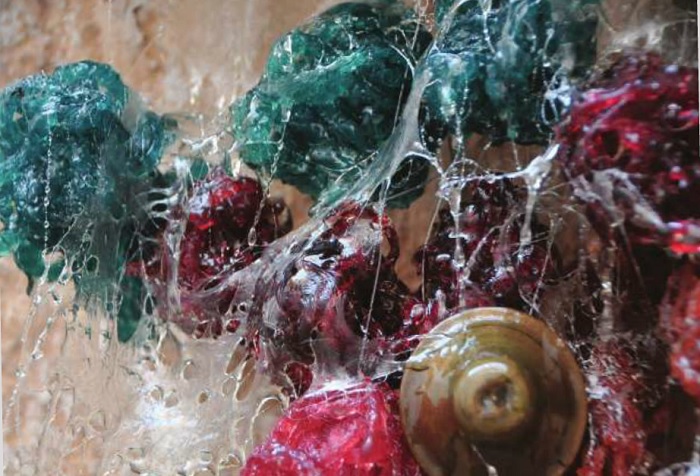
Stacey Gillian Abe. This name is fast sounding loud gongs in the realm of art, echoing the rising stature of a young and ambitious artist who has had to knock down barriers for a breakthrough in an art discipline that is probably the least practiced in Uganda and elsewhere, writes Nathan Kiwere.
Abe graduated from Kyambogo University in Kampala with a degree in art and industrial design only two years ago, but her art already dots public spaces in four countries and counting. More than her career ambitions, it is the nature of work she does that separates her from the pack. Abe is one of very few female installation artists the local education system has produced.
Young artist ventures into unfamiliar forms with unusual results
Abe’s creations are somewhere between paintings and sculptures. They hover between a fragile state of existence and collapse. In her own words, her installations are an amalgam of man and a surreal mystical feel borne of two realms; two sides competing for and completing her creative vision. Her process highlights the strength and fragility of the female mind faced by sexuality, identity, and gender misconceptions and urban cultural self-expression.
Each space that Gillian works on has its own contexts and gets its own interpretations; her work also springs from her views on human resilience and what can be overcome. She has incorporated a metaphorical and experimental approach to her work through her interest in exploring new techniques with glass.
Through binding or cutting glass, and assembling and layering it, she constructs handmade, attention-grabbing metaphorical concepts.
One of Abe’s works titled `Sticky Situation (2015)’ is an abstract depiction of the silent addictions among the dwellers of Kariobangi, a Nairobi ghetto. Through this work she makes sense of the struggles that these people go through and their efforts to break free from drugs, sex, alcohol and all. She does this by assembling transparent bottles on which she paints red dripping colours that are reminiscent of blood – indeed a sticky situation. This project was a collaboration between the Goethe Institute of Nairobi, Afrikan Arts Kollective, and Power 254, among others and it took her two weeks to make. Other works include; `Strange Fruit (2014)’ at Nafasi Art Space in Dar es Salaam Tanzania which took her a month to install, and another in Zambia, not to mention the public art works in Kampala.
Installation art came to prominence in the 1970s but its roots can be identified in earlier artists such as Marcel Duchamp and his use of the readymade and Kurt Schwitters’ Merz art objects, rather than more traditional craft based sculpture.
Artists who make installations also tend to veer towards the experimental, aiming to shock or unsettle the viewer. As an installation artist, Abe is acutely aware of space and the ways in which her work relates to it. It shows in the manner in which her work is often sensitively arranged, or installed, to create a dialogue with its surroundings, causing the viewers to take in both her work and its environment as one overall, immersive display.
Installation art can be either temporary or permanent. However, unlike other art forms, survival on installation art is a struggle that the artist will have to contend with for some time to come as such projects are only possible with financial support from interested benefactors.
****
editor@independent.co.ug
 The Independent Uganda: You get the Truth we Pay the Price
The Independent Uganda: You get the Truth we Pay the Price



